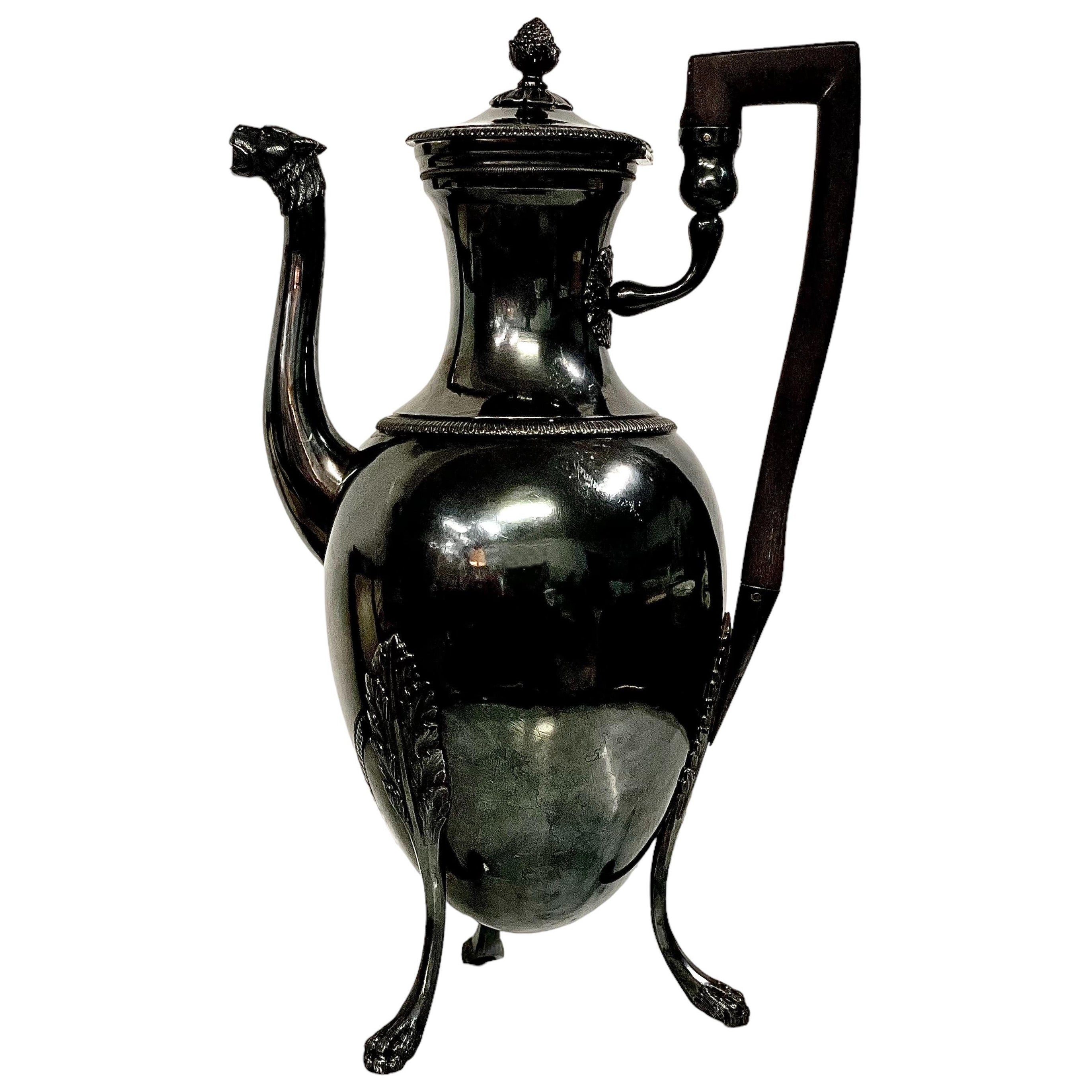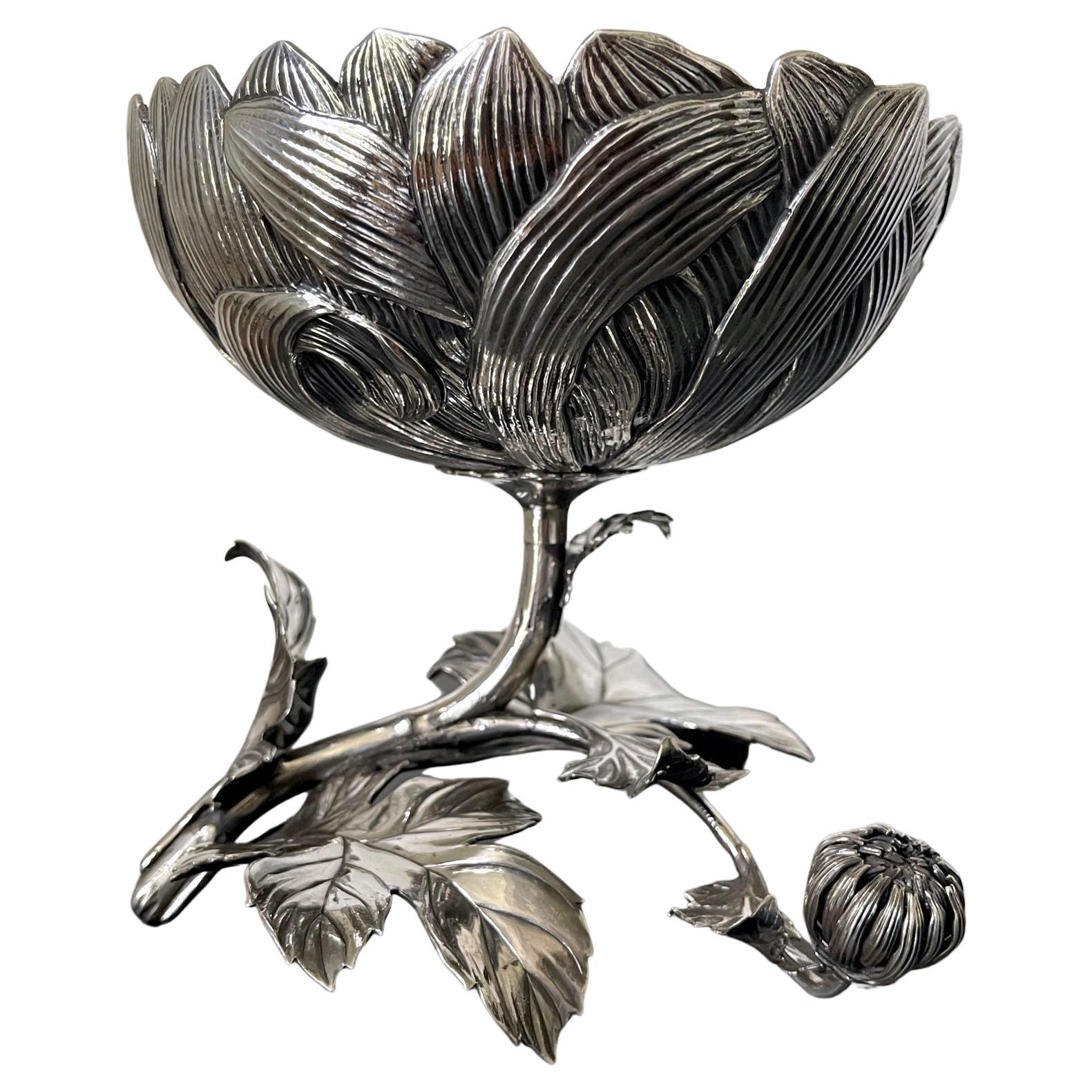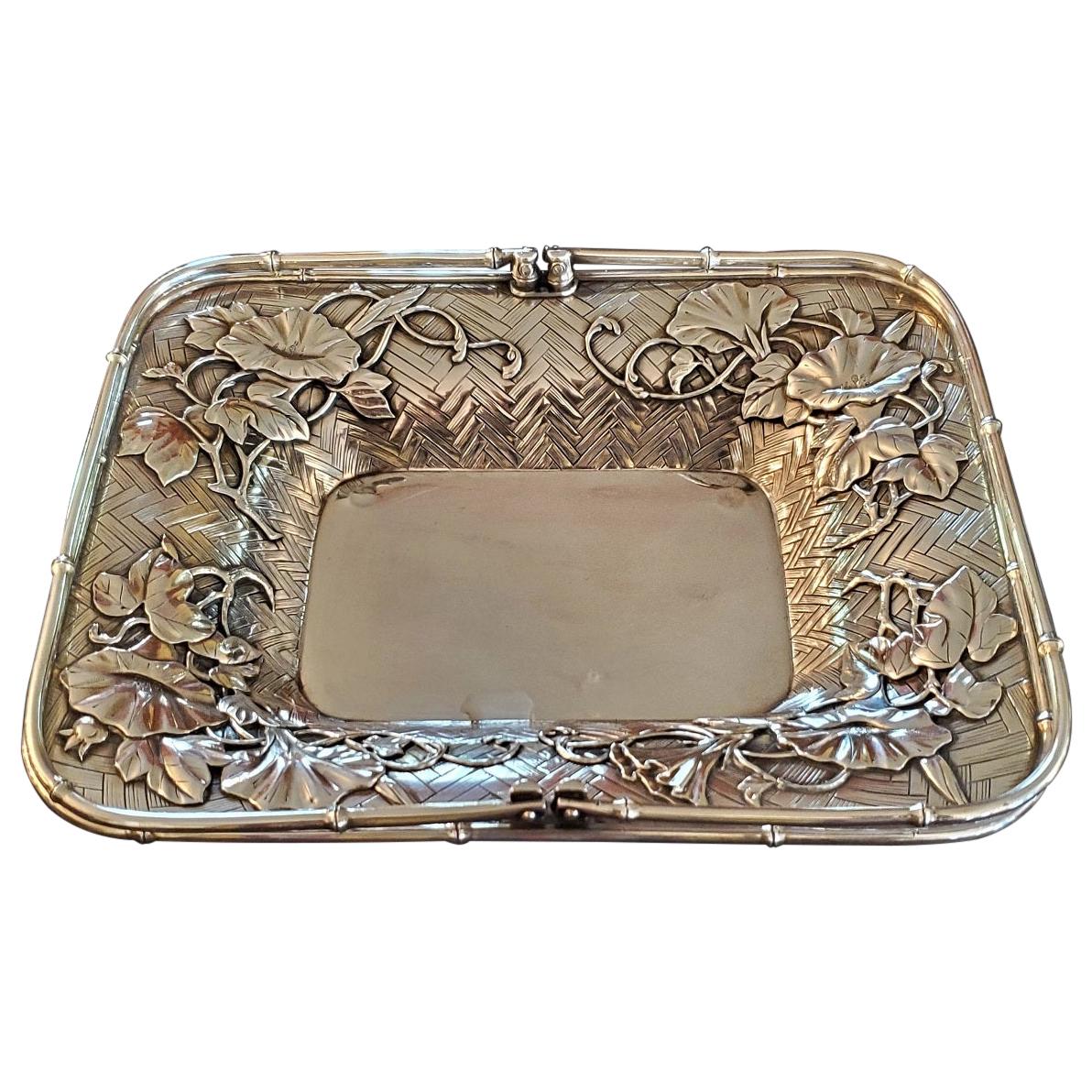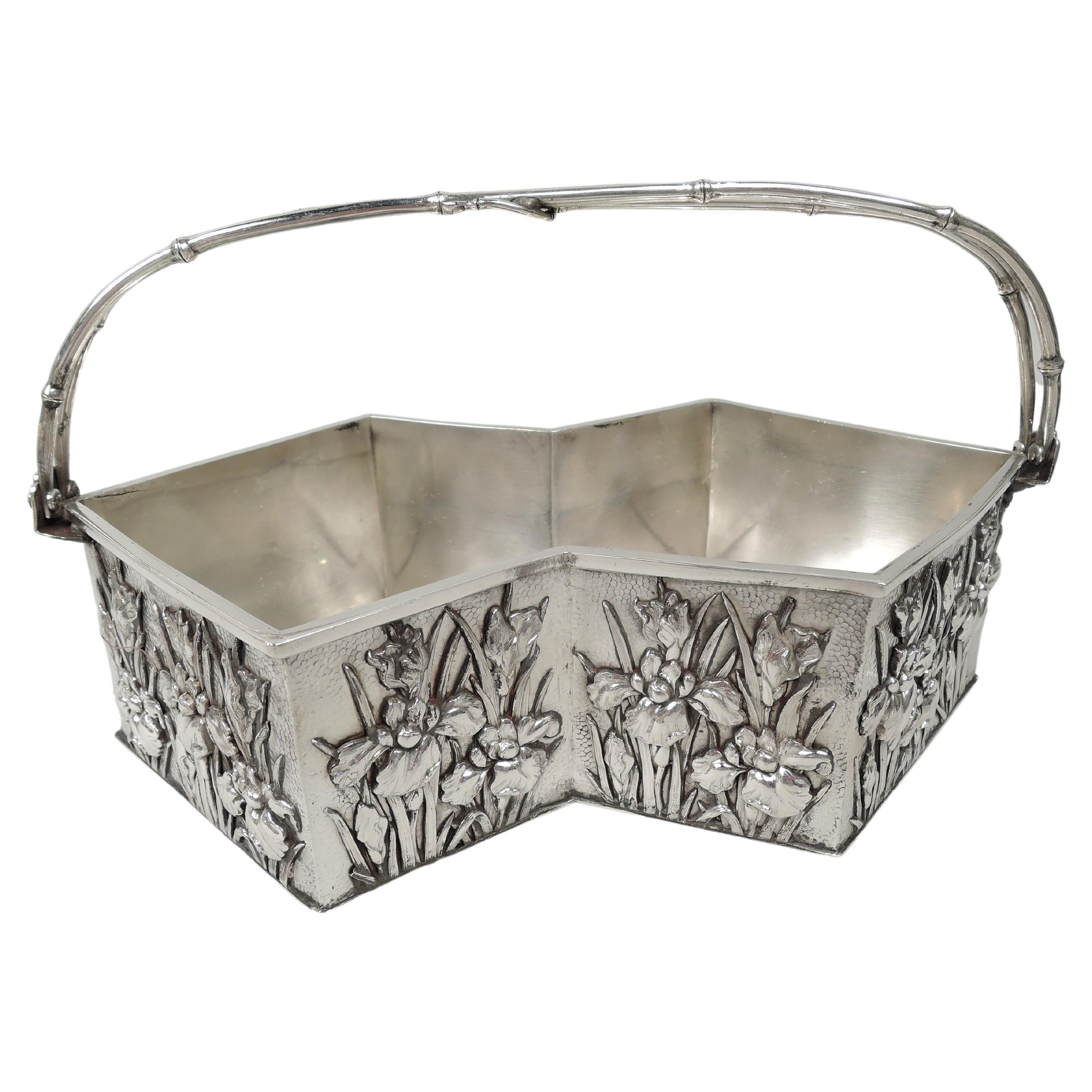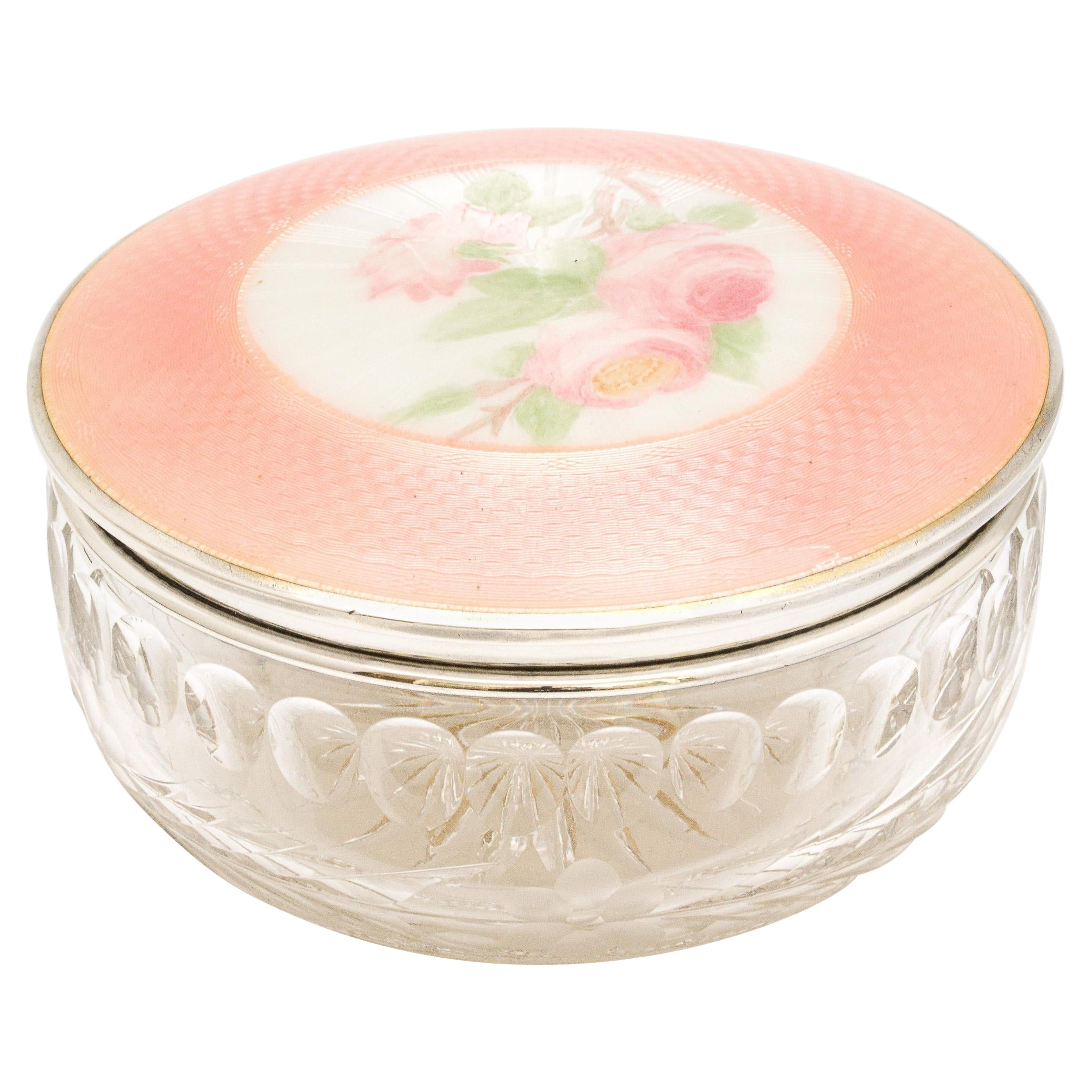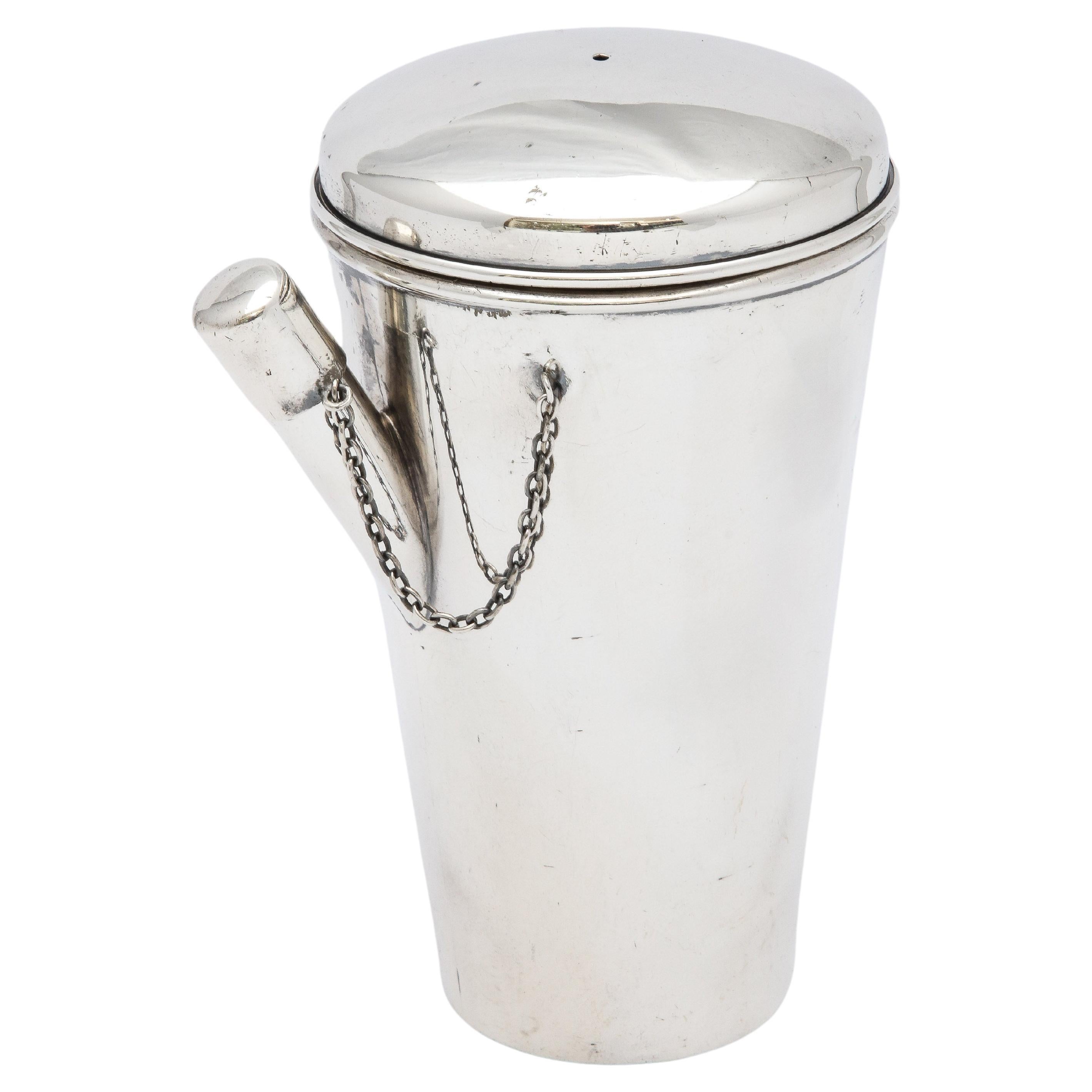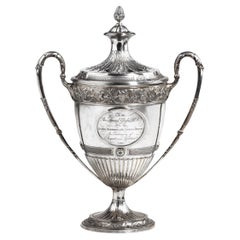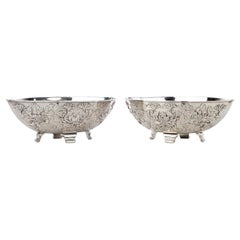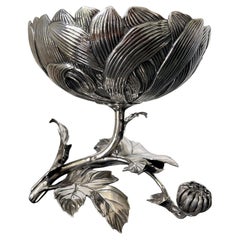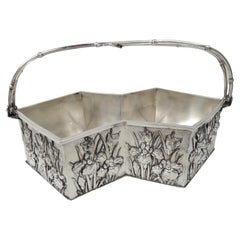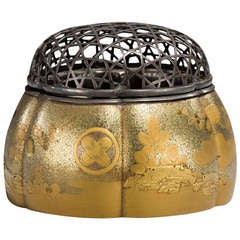
Meiji Period lacquer and silver Koro
View Similar Items
Want more images or videos?
Request additional images or videos from the seller
1 of 5
Meiji Period lacquer and silver Koro
About the Item
- Materials and Techniques:
- Place of Origin:
- Period:
- Date of Manufacture:c. 1885
- Condition:
- Seller Location:Lymington, GB
- Reference Number:1stDibs: LU9730989964
About the Seller
5.0
Recognized Seller
These prestigious sellers are industry leaders and represent the highest echelon for item quality and design.
Established in 1982
1stDibs seller since 2013
109 sales on 1stDibs
Typical response time: 1 hour
Associations
LAPADA - The Association of Arts & Antiques Dealers
More From This SellerView All
- Trinity House silver presentation cup and cover 1795Located in Lymington, HampshireTrinity House silver presentation cup and cover, 1795. This cup is modelled in the classical style with a fluted foot chased with a band of laurel leaves supporting the fluted lower ...Category
Antique 1790s English Sterling Silver
MaterialsSilver
- Pair of Meiji Period Solid Silver Bowls by EigyokuLocated in Lymington, HampshireA pair of Meiji period solid silver bowls by Eigyoku, each of lobed oval form on four scroll feet, deeply embossed with continuous chrysanthemum hea...Category
Vintage 1910s Japanese Meiji Metalwork
MaterialsSilver
$24,454 / set - A Meiji period cloisonné box and cover, Ando CompanyLocated in Lymington, HampshireA Meiji period cloisonné box and cover, Ando Company, worked in silver wire and coloured enamels with an array of brightly coloured flowers, reserved against a rich midnight-blue gro...Category
20th Century Japanese Meiji Decorative Boxes
MaterialsCeramic
- Very Large and Rare Late 19th Century Silver Covered Double Ended Scent BottleLocated in Lymington, HampshireA very large and rare late 19th century silver covered double ended scent bottle, the silver decoration in the form of a variety of trailing f...Category
Antique 1890s English Sterling Silver
MaterialsSilver
- A pair of Meiji period bronze vasesLocated in Lymington, HampshireA pair of Meiji period bronze vases, decorated in high relief, one with a pheasant perched on a branch of prunus blossom and the other with two carp swimming under a bough of wisteri...Category
Antique Early 1800s Japanese Meiji Metalwork
MaterialsBronze
$5,349 / set - Meiji Period Bronze Hanging Flower VaseLocated in Lymington, HampshireA Meiji period bronze hanging flower vase, in the form of a junk with a high prow and shaped stern, with a central well and three hanging chains.Category
Vintage 1910s Japanese Vases
MaterialsBronze
You May Also Like
- Japanese Sterling Silver Chrysanthemum Dish Meiji PeriodBy MusashiyaLocated in Atlanta, GAAn exquisite Japanese sterling silver ornamental bonbon dish, circa 1890-1900. The piece was rendered in the shape of a stemmed branch of chrysanthemum blossom and was made for export market. Both botanically realistic and stylish, the piece showcases a high degree of artisanal sensitivity and technical ability of the silversmith who created this lovely piece. The petals that form the exteriors were outlined with deep and fluid relief lines of sculptural quality. The branches and leaves were rendered with attentions to the smallest details, with molding and surface texturizing using chasing in contrast with hammering. The interior of the dish is equipped with a conforming inner dish and when it is taken out, revealing the chased lines. The piece, although practical, is basically an okimono in sculptural form, a work of art on its own. It weighs about 22 ounces. Under the dish, it is marked "Pure Silver" in Kanji and SM in a rectangular cartouche. The research (carried out by Adrien Von Ferscht, an expert and author on Asian Export Silver) identified it to be Sadajiro Musashiya...Category
Antique 1890s Japanese Japonisme Metalwork
MaterialsSterling Silver
- Japanese Meiji Period Sterling Silver 2 Handled Basket by Katsu MiyamotoBy Miyamoto Shoko 1Located in Dallas, TXPRESENTING a GORGEOUS, VERY HIGH QUALITY and EXTREMELY RARE piece of Japanese Meiji Period Sterling Silver 2 Handled Basket by Katsu Miyamoto. EXQUISITE, EXCEPTIONAL, RARE & IMPORTANT! This is definitely a Meiji Period piece due to the fact that it is marked with the sterling silver mark “jungin”. The Meiji period was from 1868 to 1912 and in 1928 a law was introduced in Japan compelling the use of decimal marks for silver. This pre-dates that decimalization law. We are of the opinion that it is from circa 1900. Miyamoto Shoko was founded in 1880 as the first silverware specialty shop. In 1899, Miyamoto Shoko’s silverwares were ordered by the family members of the Emperor of Japan, and to this day, they are making fine and graceful handicrafts with skillful craftsmen. Loved by numerous customers since the Meiji era, Miyamoto Shoko’s products have also been given to Princess Mako and Princess Kako of Akishino, as well as Princess Aiko Toshinomiya, on their birthdays. Katsu Miyamoto (宮本勝), in 1880, in order to increase the sales of tobacco and cigarettes to foreigners founded the Moyamoto Shoko company, which produced different silverwares in general and particularly silver cigarette cases. Miyamoto’s first name, Katsu (勝) in some sources is written as “Masaru”, since 勝 kanji can be pronounced in both ways. This basket is of the HIGHEST QUALITY imaginable! The top of the basket has the MOST GORGEOUS repousse work of flowers, probably lotus flowers, with leaves and foliage. It has an underlying chevron effect chasing, reflecting parquetry. The 2 handles are cast in the form of bamboo handles. The rim of the top likewise is cast as bamboo. The base is equally stunning in a different way! It is chased with a chevron effect, like parquetry flooring and the four feet simulate pieces of sliced bamboo with an interlinking gallery of support columns, likewise, simulating bamboo. The QUALITY of WORKMANSHIP is OUTSTANDING! The pieces weighs exactly 525 grams. This piece takes my breath away! This is one for the SERIOUS COLLECTOR of EXQUISITE AND RARE Japanese silver. You will not find another like it, for sale ANYWHERE ELSE IN THE WORLD …… I know as I have searched! Provenance: Acquired from a Dallas Private Collector. Dimensions: 9.6 inches wide, 7.6 inches deep and 2.75 inches tall ( 7.25 inches tall with handles up) Condition: Very good. It looks like the base 4 legged gallery, has been repaired/re-attached to the base, but otherwise it is excellent and of Museum quality. The Meiji period (明治時代 Meiji-jidai?), also known as the Meiji era, is a Japanese era which extended from October 23, 1868 through July 30, 1912.[1] This period represents the first half of the Empire of Japan during which Japanese society moved from being an isolated feudal society to its modern form. Fundamental changes affected its social structure, internal politics, economy, military, and foreign relations. The period corresponded with the reign of Emperor Meiji after 1868, and lasted until his death in 1912. It was succeeded by the Taishō period upon the accession of Emperor Taishō to the throne. Solid silver pieces...Category
Early 20th Century Japanese Meiji Metalwork
MaterialsSterling Silver
- Antique Japanese Meiji Art Nouveau Silver BasketLocated in New York, NYJapanese Meiji Art Nouveau silver basket, ca 1890. Faceted zigzag bowl with convex ends and concave sides, and double bamboo-style swing handle. Sid...Category
Antique Late 19th Century Japanese Art Nouveau Sterling Silver
MaterialsSilver
- French Empire Period Silver EwerLocated in LA CIOTAT, FRThis very striking Parisian silver ewer dates from the Empire Period, and is hallmarked on its base with official silver standard and guarantee marks, including a cockerel, showing t...Category
Antique Late 18th Century French Empire Sterling Silver
MaterialsSilver
- Antique Japanese Meiji-Era Silver Box with Iris FlowersLocated in New York, NYJapanese silver box, ca 1890. Rectangular with straight sides and hinged cover. On cover top and box sides are chased and engraved iris flowers and tendril...Category
Antique Late 19th Century Japanese Art Nouveau Sterling Silver
MaterialsSilver
- Edwardian Period Sterling Silver Ice Tongs by S. Kirk and SonBy S. Kirk & SonsLocated in New York, NYEdwardian Period, sterling silver ice tongs, S. Kirk and Son, Baltimore, Maryland, circa. 1900, Old Maryland - pattern. Measures 6 1/2 inches long x 3 inc...Category
Antique Early 1900s American Edwardian Sterling Silver
MaterialsSterling Silver
Recently Viewed
View AllMore Ways To Browse
Japanese Koro
Japan Koro
Silver Koro
Japanese Koro Silver
Franz Jewelry
Tiffany Style Book
Silver Tea Set Vintage
Retro Glass Egg Plates
Vintage Silver Tea Set
Mother Of Pearl Fish
Antique Silver Fruit Spoons
Art Nouveau Cutlery
Sterling Silver Table Ornament
Sterling Silver Presentation Cup
Silver And Gold Ice Cream Spoons
Bronze Spoons
Grande Baroque
Laurel Silver Set
